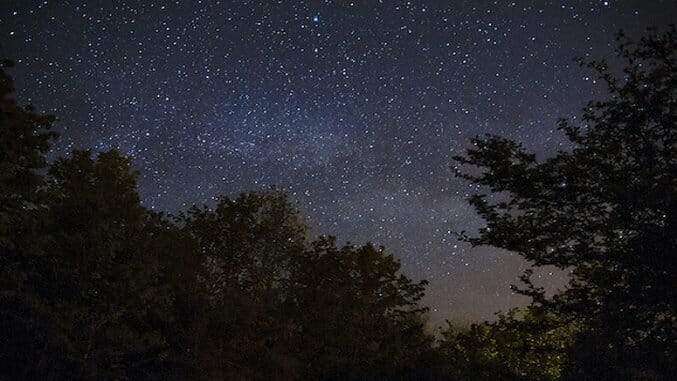Space Matter: The Planet KELT-9b Is Hotter Than a Star

Yes, you read that right. About 620 light years away, there’s a planet called KELT-9b that’s hotter than many of the stars in our galaxy.
How is that possible?
According to a study published in the journal Nature, the amount a planet is irradiated is dependent on the temperature of the star it orbits. That makes sense—the hotter the star, the hotter the planet (all else, such as distance from the star, being equal.)
Now, A-type and B-type stars are much hotter stars than our Sun. While A-type stars have a surface temperature range between 7,600 and 11,500 K, B-type stars run from 10,000 to 30,000 K. For comparison, the surface of our Sun is a comparatively cool 6,000 K. A- and B-type stars are also much more massive than our own star.
The Nature study specifically focuses on the planets that orbit these incredibly hot stars. As of June 22, 2017, we’ve discovered 3,497 confirmed exoplanets, or planets outside our solar system. A mere eight of these planets orbit A-type stars. We have found no exoplanets orbiting even hotter B-type stars.
 The Summer Triangle is composed of three A-type stars: Vega, Altair, and Deneb (Image credit: Raffaella Mattei Cattani)
The Summer Triangle is composed of three A-type stars: Vega, Altair, and Deneb (Image credit: Raffaella Mattei Cattani)
![]()
This doesn’t necessarily mean that there are fewer planets around hot stars, though; the fact is that it’s easier to find exoplanets around comparatively cooler stars like our Sun. One way we confirm that a suspected exoplanet is an actual one is through Doppler spectroscopy; until 2014, it was actually the most widely used method. Scientists can see shifts in a star’s radial velocity with respect to earth (the speed at which the star moves away from us as the universe expands) that occur as a result of a planet’s gravity acting on the star using a spectrometer. Hotter stars don’t have as many spectral lines as cooler ones, which makes confirming exoplanets around these stars much more difficult.
KELT-9 is a A-type star with a temperature of around 10,000 K and a mass over double that of our Sun. It’s the hottest star known to have a planet orbiting it, called KELT-9b. Now, KELT-9b isn’t an Earth-like planet. It’s a massive gas giant, similar to Jupiter, and it takes just 36 hours to complete one orbit of KELT-9. That’s because of its unique orbit—as seen from the Earth, it orbits at its star’s pole, rather than around the equator, as occurs in our solar system (well, except for Neptune and its weird elliptical orbit).
-

-

-

-

-

-

-

-

-

-

-

-

-

-

-

-

-

-

-

-

-

-

-

-

-

-

-

-

-

-

-

-

-

-

-

-

-

-

-

-

 An artist’s concept of KELT-9b around its host star. (Image credit:
An artist’s concept of KELT-9b around its host star. (Image credit:  The storms of Jupiter’s south pole, as photographed by Juno (Image credit:
The storms of Jupiter’s south pole, as photographed by Juno (Image credit: 






































